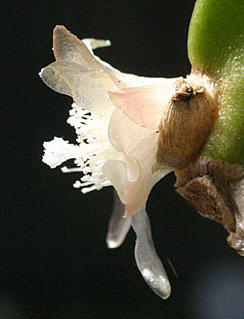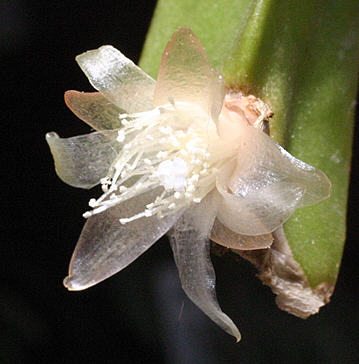Rhipsalis paradoxa (Salm-Dyck ex Pfeiffer) Salm-Dyck, Cact. Hort. Dyck. 1849:228 (1850) |
|||
|
Plants
- freely giving off aerial roots, branched, hanging in large
clusters 1 meter long or more; branches in zigzag links, terminal,
in pairs or in whorls of 3 to 8, more or less spreading, 3.winged,
pale; The young growth is glossy green, the areoles subtended by broad round bracts. Seedling plants are very different from the adult plant; they are strongly 4-angled, with each angle bearing closely-set areoles, filled with slender bristles and showing no resemblance to the typical form; gradually as the plants grow older their mature joints take on the normal form. This plant is a prolific bloomer and in the garden of the Museo Paulista it remains in flower for three weeks. subspecies paradoxa Notes from Bradleya 13 DISTRIBUTION. Brazil SW Rio de Janeiro, Sao Paulo, Parana, Santa Catarina): epiphyte in seasonal Atlantic forest, sea level to c. 800 m altitude. Desc from Hunt 2006. |
||


